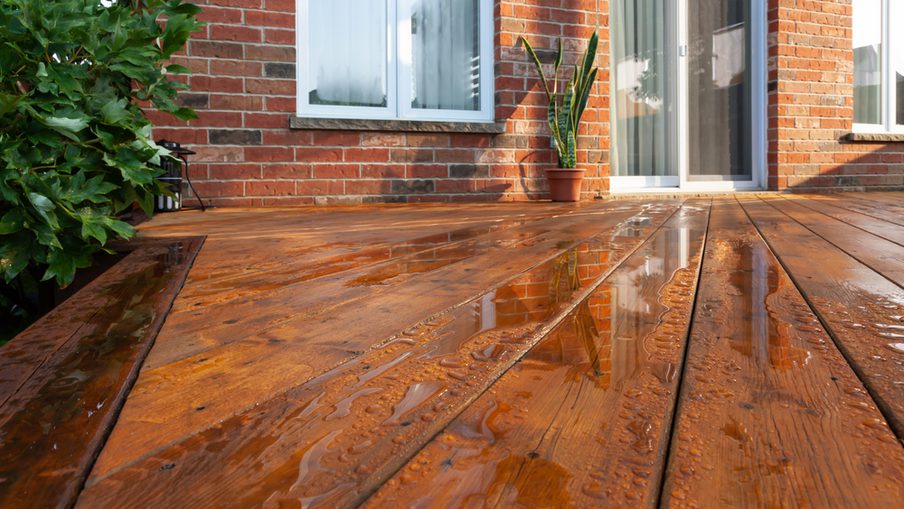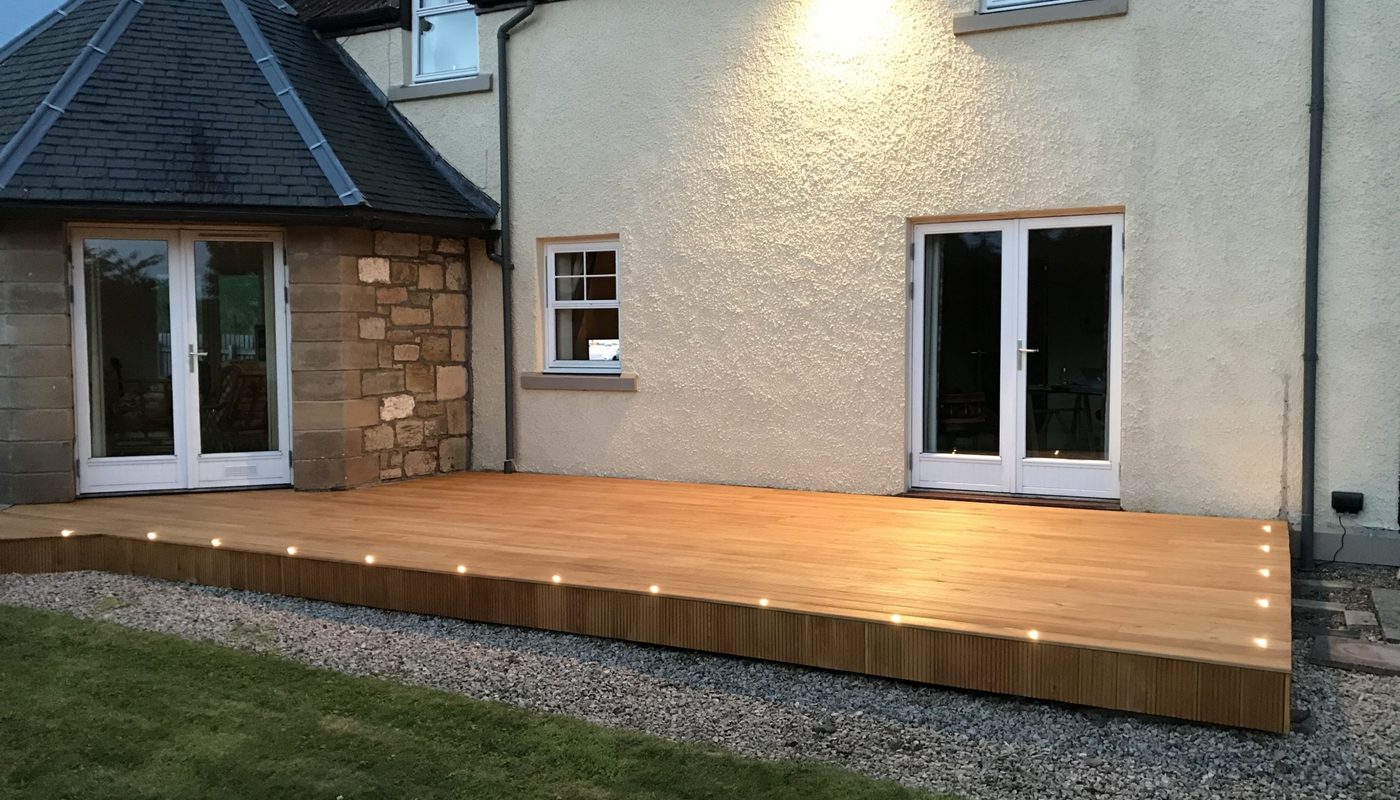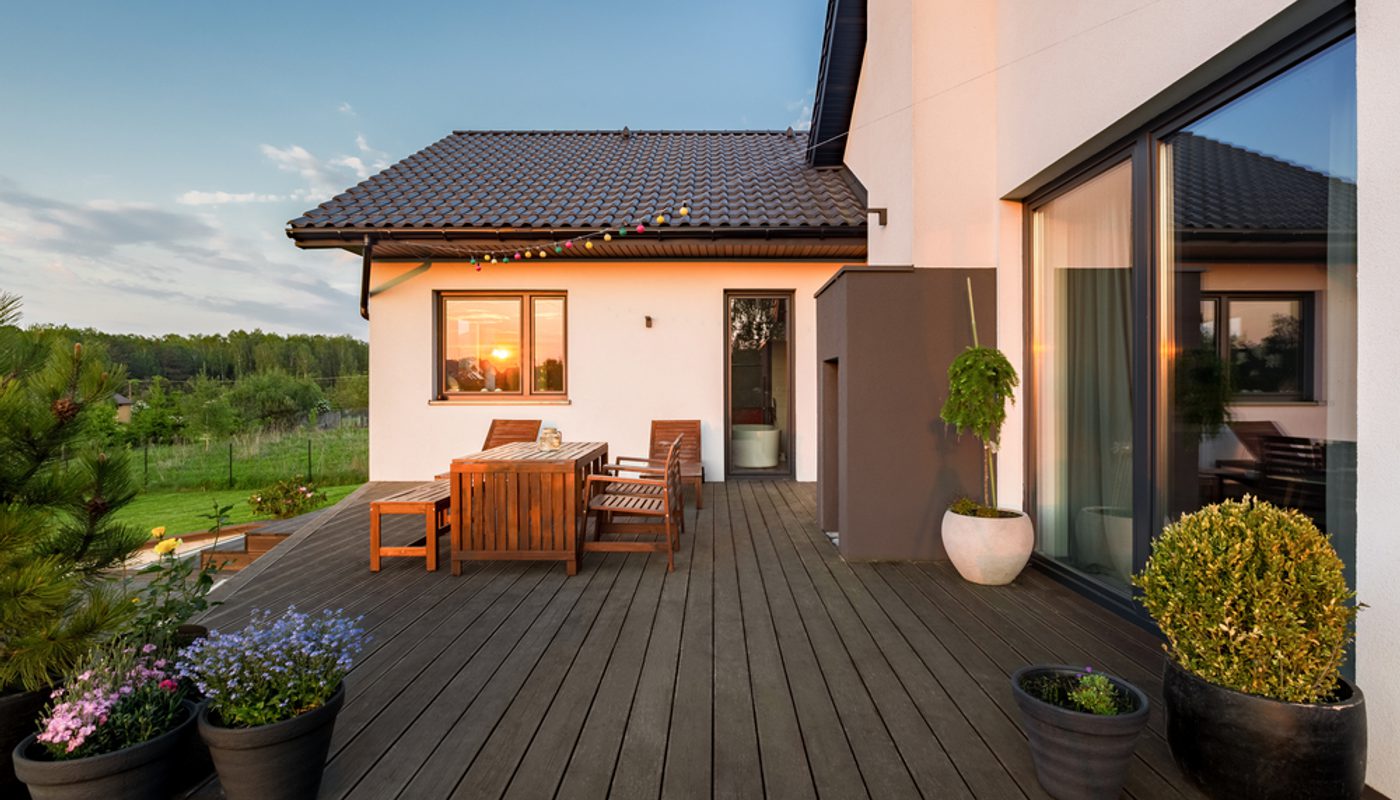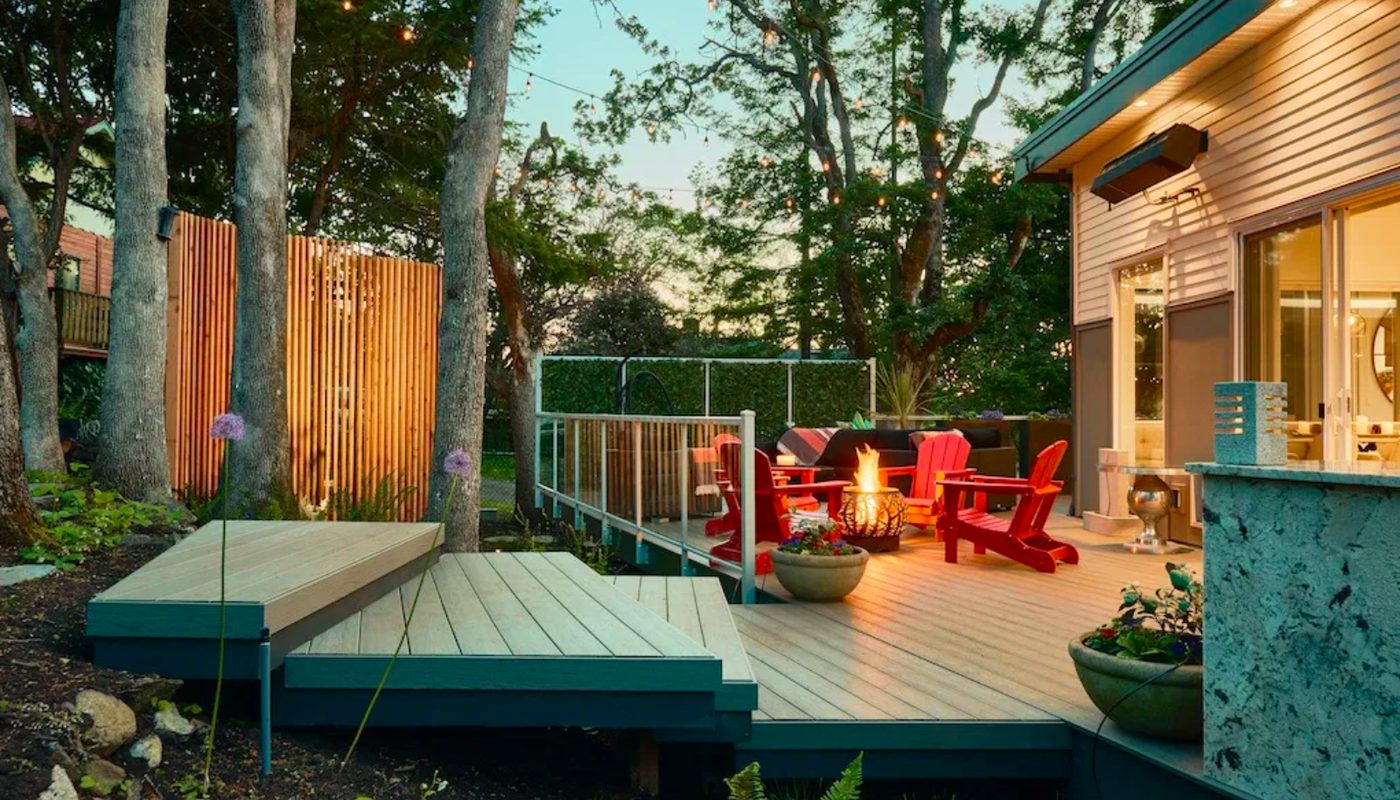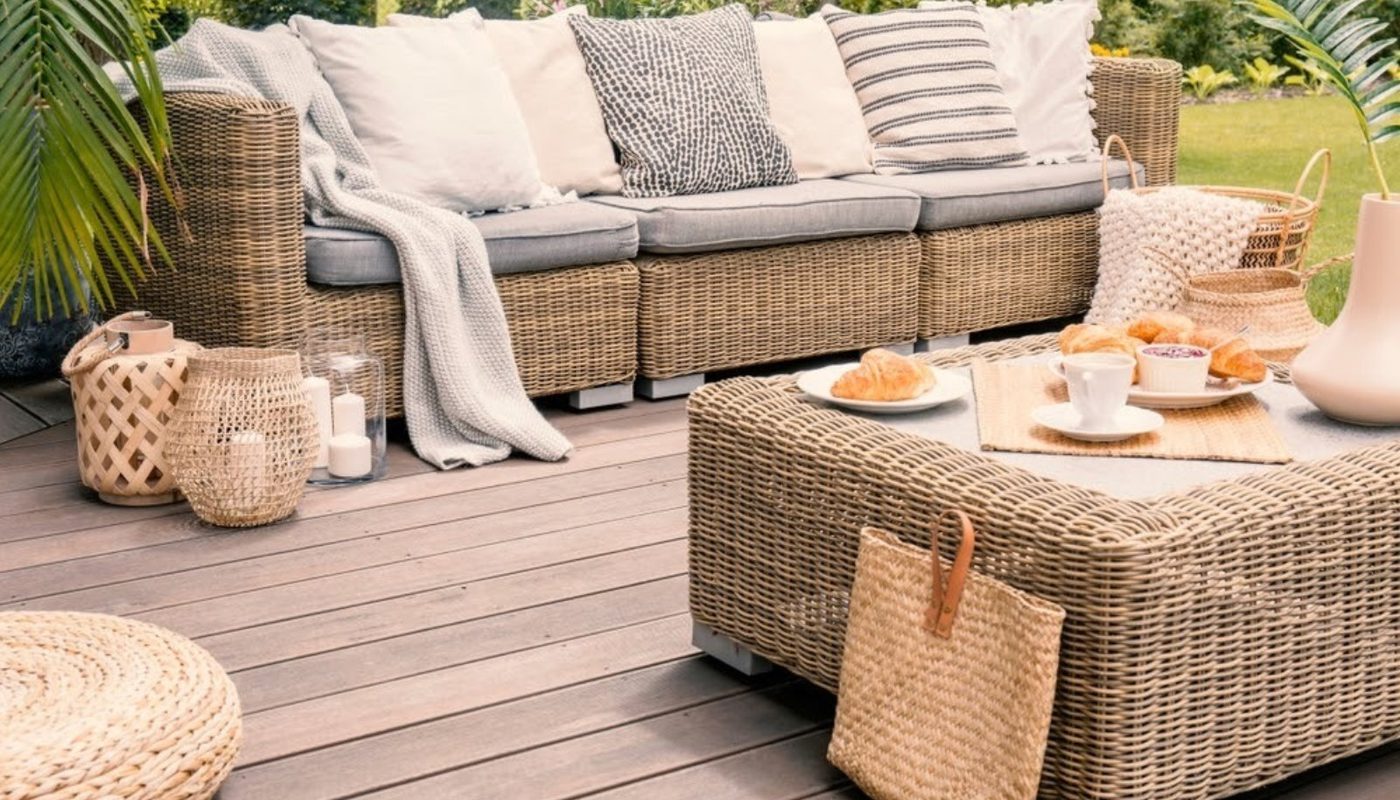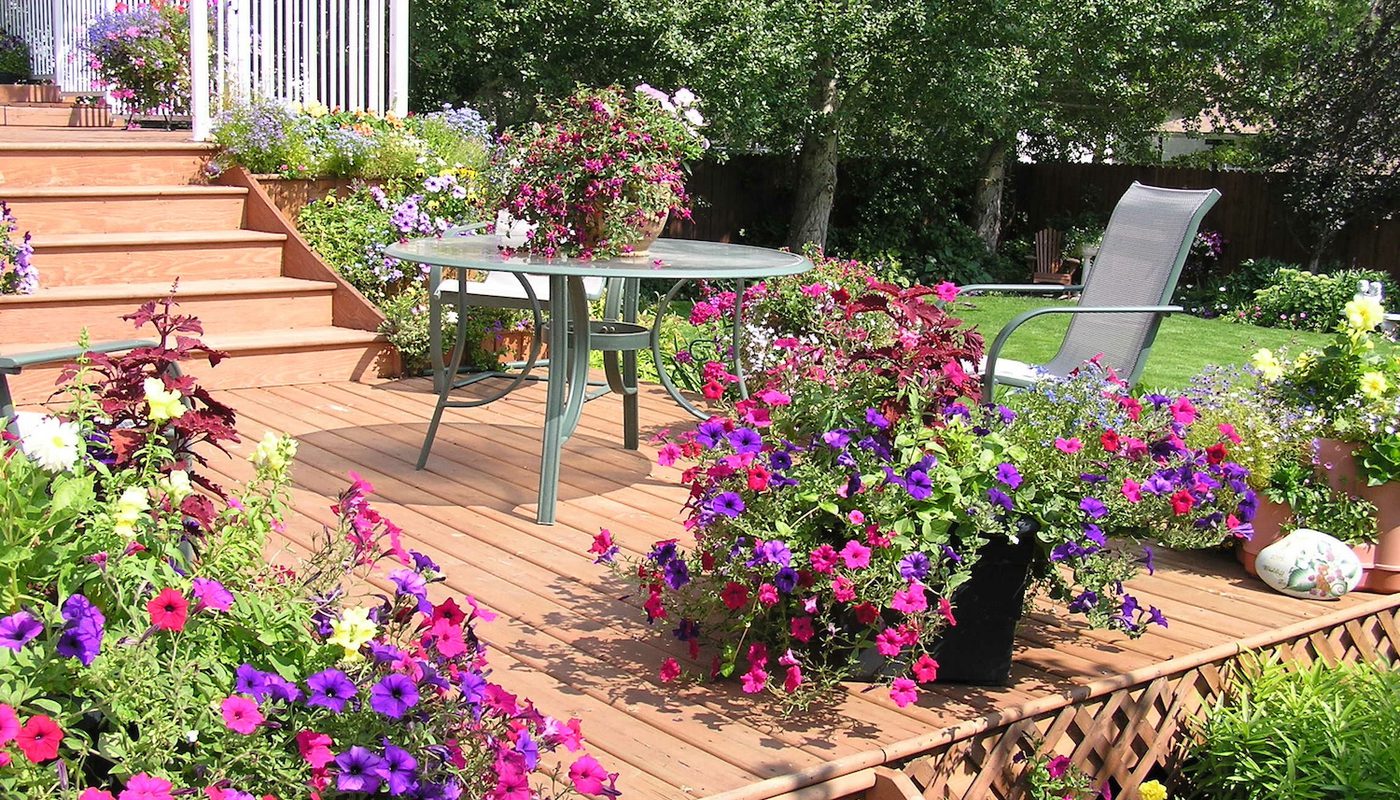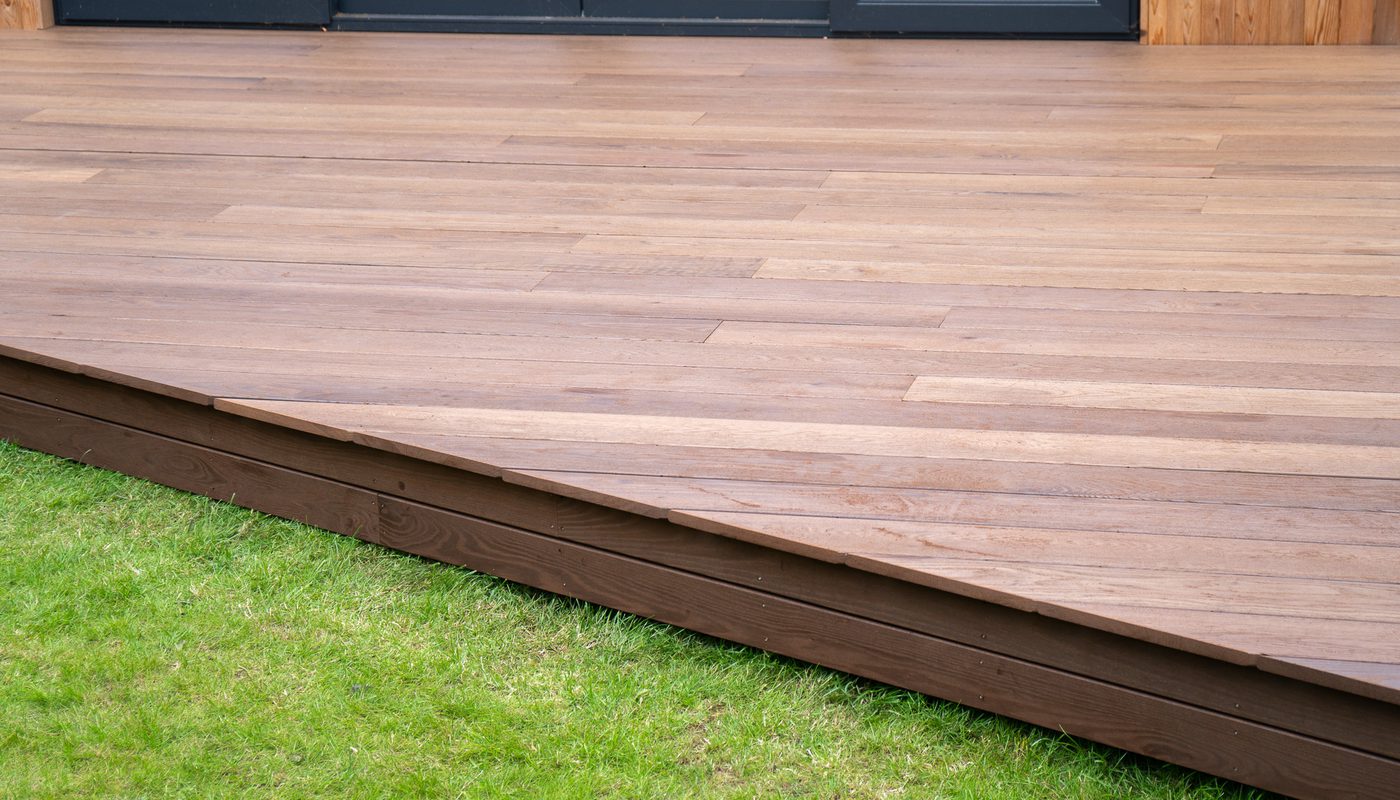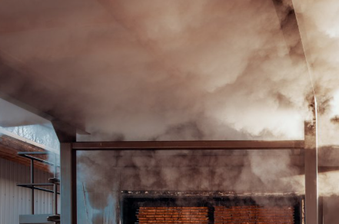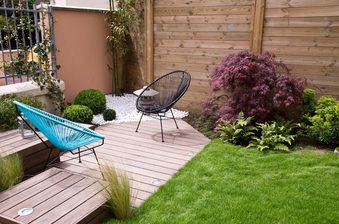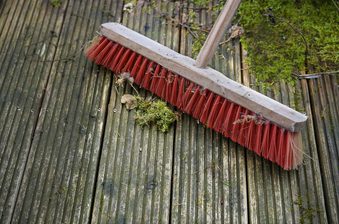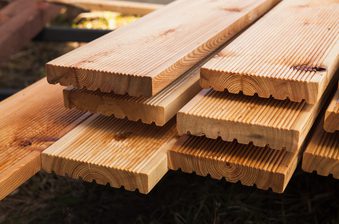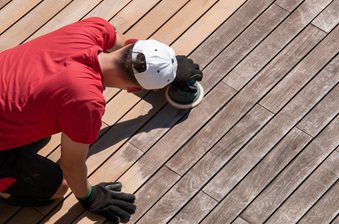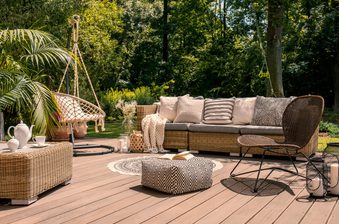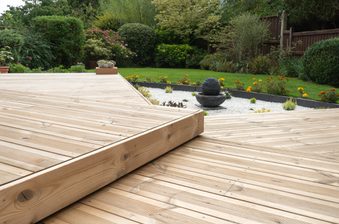The mulching of leaves in autumn, sub-zero temperatures through winter and those typical British summer rain showers can all reduce traction underfoot when you’re walking on your timber decking.
Algae and fungi are prime culprits causing traction loss on a timber deck; keep on top of things with regular brushing and sweeping. Also consider anti-slip tape, rubber mats or, for a more permanent solution, anti-slip strips or an oak covering. Your choice of profile, species and finish can also affect traction underfoot!
1. Brush your decking regularly
Wet wintertime weather creates ideal conditions for the growth of algae and fungi — the top troublemakers when it comes to a slippery deck. As well as feeding moss, mould and other undesirable organisms, organic material like leaves, mud, debris can create a slippy layer as the weather turns south.
We’re sure this ‘tip’ sounds disappointingly obvious, but regularly brushing your decking is the easiest and cheapest way to ensure you stay on your feet all year round.
Whenever you step outside from the start of autumn, a quick once-over will help to clear pooling water, organic matter and dislodge any nascent fungal growth — sure to spare you some embarrassment when you’re carrying that tray of hot drinks.
For the job, consider investing in a stiff bristle brush (be sure to avoid metal as this can cause small amounts of damage to your decking, opening it up to risk of rot).
2. Apply some anti-slip decking tape
Whilst this is only a temporary solution, it can immediately make your decking much safer space to walk on. Adhesive anti-slip tape is relatively cheap and can be added quickly and only where needed, such as high-traffic walkways and stairs. You can pick it up online or from home improvement stores.
However, these strips are best applied on a clear day (which can certainly come at a premium during British wintertime) and they don’t last forever! You also need to ensure that any areas this tape is applied are free of fungi or dirt. Give your deck a gentle brush and scrub with some soapy warm water and allow it to fully dry out.
3. Install anti-slip strips
For a more permanent and stylish solution, you can add anti-slip decking strips. These strips have a gritted, anti-slip surface. They are available in a range of sizes and are screwed into the decking boards at strategic points.
The only issue some people have is that they’re not always the most aesthetically-pleasing solution. If you’re planning a new project, decking can be supplied ready with anti-slip strips that are specially selected to blend in with the wood and your surroundings.
4. Choose a slip-resistant profile and species
Decking is available in a range of profiles, including smooth, fluted, castellated and even flat & fluted. Naturally, the grooves in the fluted and castellated profiles profile greater traction underfoot. You might like to think about how you’re going to be using your space when the decking is laid; walking ‘with’ the grooves’ will provide less traction.
Additionally, a deck that is made out of a quality, durable species (or a treated timber) will naturally be much more adept at withstanding moisture, fungal growth and everything else the British weather has to throw at it.
Popular examples include Iroko (an African hardwood nicknamed the ‘Rolls-Royce of decking’), European Oak, Siberian Larch, Balau and ThermoWood. All are naturally resistant to insect attack and decay, with the latter actually being thermally modified to boost its outdoor performance (with the added bonus of its exotic dark brown hues!).
If safety is a major consideration — perhaps you’re creating a commercial space— your deck’s non-slip credentials can be further bolstered with the addition of strategically-installed anti-slip strips that we mentioned earlier.
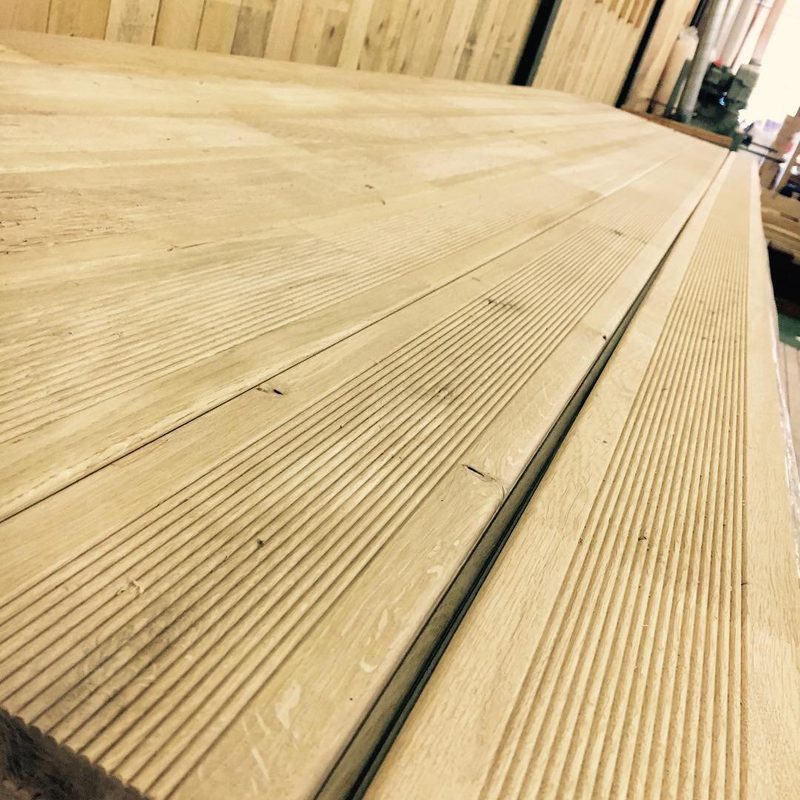
5. Treat your deck with a quality woodcare finish
Wood is a porous material that can absorb moisture from its surroundings. By treating your deck with a quality finish, you can help to seal it; this will extend its service life and create a surface that’s more resistant to water absorption (and therefore the growth of slippy algae and fungi).
There are many products out there for this job; some are even marketed as ‘anti-slip oils’. We’d recommend something like Owatrol Textrol HES. Available in a range of tints, it penetrates the wood with a protective coating that shields it from those destructive outdoor elements like moisture and UV.
Be sure to choose something non-film forming; a quality product can even enhance the beauty of the wood’s grain.
To prevent coating failure, you’ll need a clean deck and a dry, clear day to apply the finish — so it’s maybe best done in late spring or on a cool summer’s day. Of course, be sure to follow the product manufacturer’s instructions.
6. Use rubber outdoor grip mats
Whilst we hate to advocate anything that covers up the natural beauty of timber (even if only temporarily), these can be a smart, quick solution if you’re hosting guests, need to provide a clear path across your decking or you’re looking to create a safe play area for the little ones.
Available in a range of sizes, they provide plenty of traction. You can find them online or in most home improvement stores.
7. Add some oak-framed cover
This is rather a more drastic solution, but adding a covering to your outdoor space — like a pergola or gazebo — can not only make it more practical year round, but reduces your deck’s exposure to the elements (and therefore the big winter slip risk).
Oak-framed structures naturally complement timber decking and can blend seamlessly into outdoor surroundings, so they can add big value to your garden too. The difference between pergolas and gazebos is the roof; pergolas are open, but decent cover can still be achieved with some decoration.
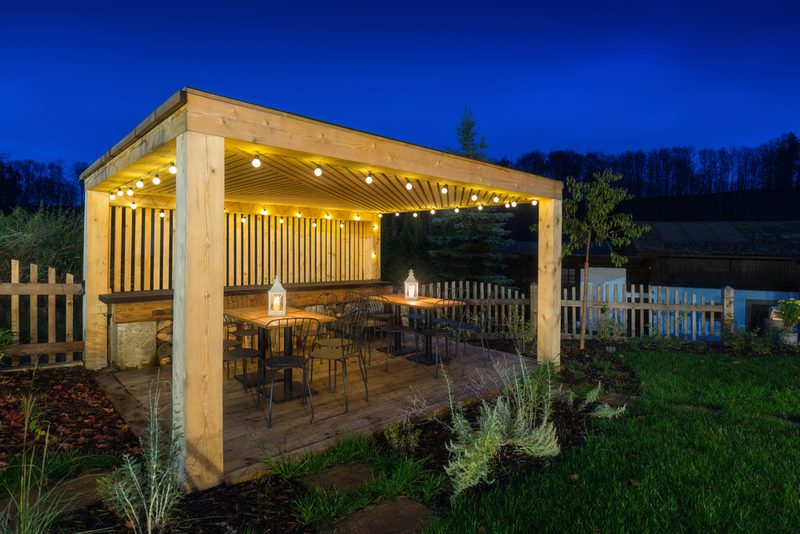
8. Use a plastic shovel if things get icy (and avoid grit salt)
Sub-zero temperatures are a hallmark of the winter months, and it’s not uncommon to wake up to a thin layer of frost, ice or even snow.
Remove as much of it as you can from the areas you’ll be walking across using a plastic (rather than metal) shovel. This will prevent potential damage and reduce the likelihood of a slippery icy layer forming underneath.
Avoid using grit salt, if you can — the chloride in the salt absorbs moisture from the timber, affecting its natural expansion and contraction process. As well as potentially staining the wood, it can be dangerous if four-legged family members decide to lick it off their paws!
Take your outdoor space to the next level
At Duffield Timber, we supply decking in a range of beautiful, high-performance hardwoods and premium softwoods — all sustainably sourced from across the world.
These are all available in an extensive array of profiles and patterns, and if you have something bespoke in mind, we’d love to help. Our decking can be provided with a range of additional extras and features depending on your project requirements, including anti-slip strips and UV protection.
Start your enquiry by clicking the ‘get in touch’ button below or reach our team through our contact page, by phoning 01765 640 564 or by emailing sales@duffieldtimber.com. Whatever size of space you’re working on, our team can help. You’ll be assigned a project handler who’ll be with you from enquiry to delivery.
In the meantime, be sure to explore our content hub for more information, ideas and inspiration for your next decking project.
